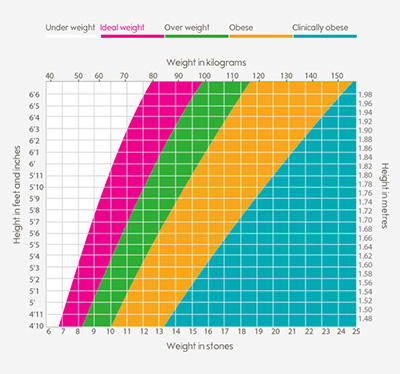
Source: guardianlv.com
Surgery for the obese
Obesity is defined as body mass index (BMI) >30. With the escalating problems relating to obesity namely diabetes mellitus, arterial hypertension, obstructive sleep apnoea, fatty liver, stress incontinence, stroke, cancer, arthritis and psychological disorders.
The problem of obesity continues to trouble us and a solution continues to be elusive. Morbid obesity on the other hand is defined as BMI of 40 or more. Another measure of obesity is the waist circumference . In men waist circumference of over 102 cm warrants intervention and in women 88 cm warrants intervention.
Dietary regimes have been popularized, advocated, marketed and even sold and yet we do not see any foreseeable solution to this “BIG” problem. Malaysia ranks sixth in the Asia Pacific region and first in the ASEAN region. A title we should not be proud of.
Reasons for obesity
The etiology or cause of obesity is complex and has much to do with the free availability of high calorie food stuffs, combined with sedentary lifestyle of the late 20th and 21st century. Interestingly in Malaysia despite the vast abundance of food and also the diversity of recipes available, obesity was not a problem in the 50s and post merdeka 60s. The availability of food and the emergence of the new middle class population gave rise to not only an explosion in food production but also a glutinous veracity in food consumption for which we are seeing the middle age group suffer from now.
Numerous genetic abnormalities have also been linked with obesity namely Prader – Willi Syndrome (1 in 25000) . The genetic abnormality is the deletion on the long arm of chromosome 15.
The impact of obesity is global not only to the patient but it reflects back on population, work and society as a whole. An obese patient generally has higher risk of mortality compared to normal matched controls. An obese patient usually develops co-morbidities that lead to reduced days at work and also reduction in productivity. The patient also suffers from cardiovascular diseases and cancers more as compared to matched individuals.

Source: www.waitrose.com
Indications for obesity surgery
In view of the extent of the procedure, there are several criteria to qualify a patient for obesity surgery. They are as follows:
- BMI > 40 ( BMI equals to or more than 40)
- BMI 35-40 with obesity related co-morbidities
- Age between 18 to 65
- Obesity for more than 5 years
- Failed non surgical attempts at weight loss
- Fit enough for surgery
- No specific clinical or psychological contraindications.
- Understand risk of surgery
- Be committed to long term follow up
General considerations
Any obesity surgery must be a multidisciplinary approach involving endocrinologists, surgeons, dieticians, specialist nurse and preferably a psychologist or psychiatrist. The pitfall of not having a complete team can translate into poorer post operative results and at times failure to lose weight despite having the operation done.
The surgical procedures
The surgical procedures can be divided into purely restrictive procedures and bypass/malabsorptive procedures .
- Purely Restrictive Procedures – This technique involves fashioning a stomach into a smaller pouch and few techniques can be used to do this .
- Bypass/ Malabsorptive procedures – This technique involved creating diversions for example bypass surgery by connecting the stomach to the small bowel.
The choice of procedure depends on the BMI of the patient as well as the expertise of the surgeon performing it.
Does it actually work?
Weight loss with surgery has been proven to be successful. A recent meta analysis of 22000 patients in 136 studies showed a mean percentage excess weight loss for gastric bypass of 61.6% and gastric banding of 47.5%. (1)
Proper case selection and also preoperative preparation and counselling are key to obtain a successful outcome from obesity surgery. However having said all that the best way to manage obesity is still by PREVENTION and enforcing a healthy lifestyle which includes a proper diet and exercise regime.
References:
- Buchwald H, Avidor Y , Braunwald E et al . Bariatric surgery: a systemic review and meta analysis. JAMA 2004; 292:1724-37
